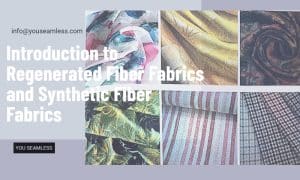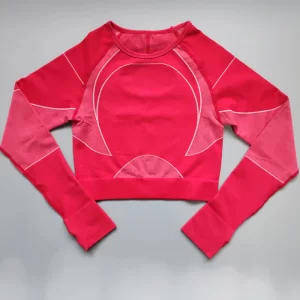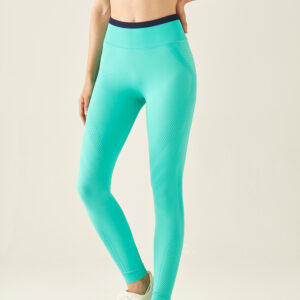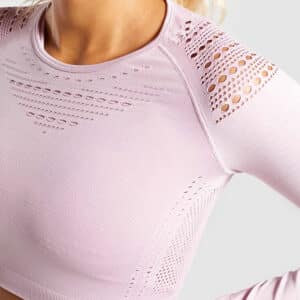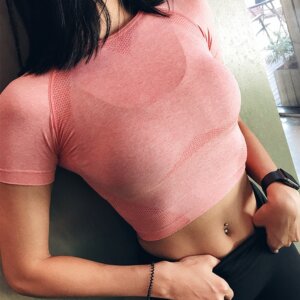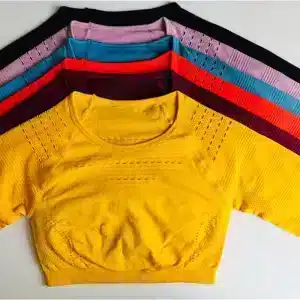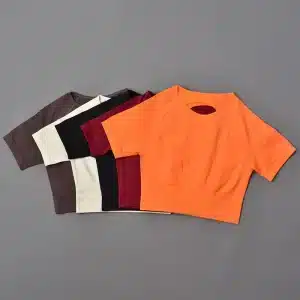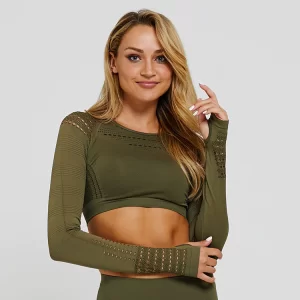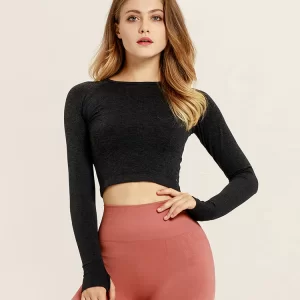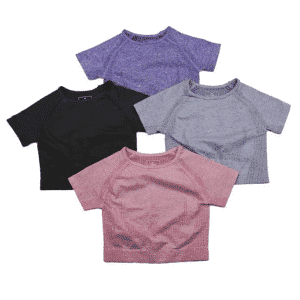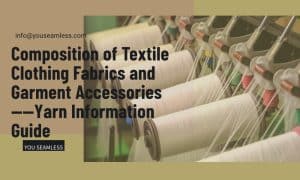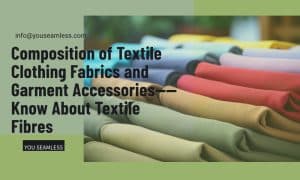Sustainable consumption is becoming more and more popular. Eco-friendly fabric products, minimalist packaging, circular economy and slow fashion are all signs that green consumption is becoming more prevalent. Below, we introduce 5 sustainable fabric for your reference.
1. Certified organic cotton
Organic cotton is one of the most natural fabrics. Cotton is grown without the use of synthetic fertilizers and pesticides. And it is made without chemicals. Organic cotton uses 62 percent less energy and 88 percent less water than conventional cotton. Therefore, organic cotton is an environmentally friendly material.
Organic clothing brands use this fabric in almost every type of clothing: organic underwear, organic maternity wear, organic baby wear, and so on.
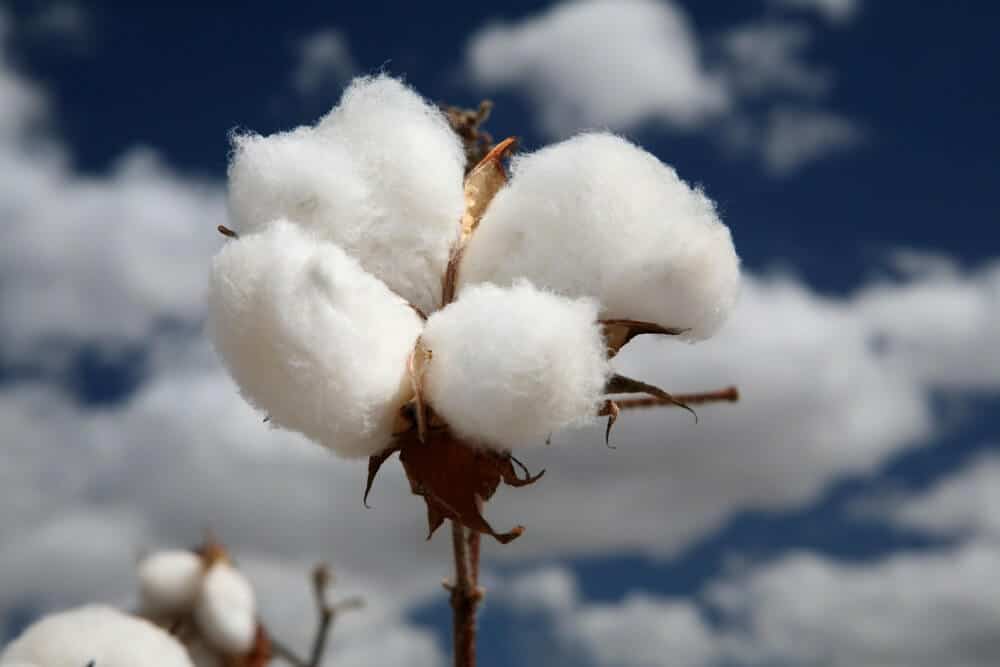
It can be used to produce a variety of materials such as knitted fabrics, poplin, canvas, or tulle, making it a preferred choice for many brands. About 2m tonnes of organic cotton are sold each year, compared with more than 17bn tonnes of conventional cotton.
2. Organic hemp
Organic hemp is one of the most environmentally natural fabrics available. Hemp cultivation is good for the soil and it produces high yields. Most importantly, it requires much less water to grow than cotton. It absorbs carbon dioxide from the atmosphere. Because it is difficult to grow, organic hemp tends to be slightly more expensive than other sustainable organic fabrics.
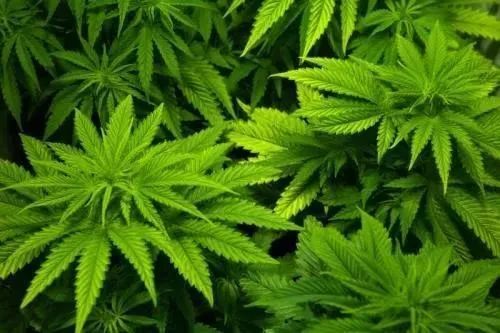
3. Organic flax (Linen)
Linen is made from the fiber of the flax plant and is known for its resistance, insulation, and resistance to allergies. From planting seeds to harvesting flowers, they can be cultivated according to the standards of organic farming. It requires little water or pesticides, only sunlight, and rain to grow, and even absorbs carbon dioxide from the atmosphere. Cotton accounts for 75 percent of the world’s natural fiber production and flax only 2.4 percent, but it is becoming more popular.

Flax is almost identical to hemp. The fabric made from it is light and breathable. Unlike organic hemp, organic flax is made from flax. Flax is much less difficult to grow than hemp, but most importantly it is less productive.
However, flax is generally popular. Such as linen clothing and linen sheets.
4. Marijuana
The oldest activewear fabric found so far is hemp, which is nearly indestructible, resistant to moisture-wicking and UV rays, suitable for human skin, the water quantity it needs to grow is 10 times less than cotton, and it does not need chemicals to stimulate its growth or protect it. Hemp is also highly insulating and absorbent, and it will become softer over time. It is a good material to use to make loops, denim, herringbone, and flannel, as well as a variety of knitted fabrics, such as knitwear and flannelette.
5. Organic bamboo (Bamboo hemp)
The interesting thing about organic bamboo is that it is harvested without killing the plant. So bamboo can be produced continuously. At the same time, bamboo grows extremely fast. Bamboo consumes more carbon dioxide than some trees. What’s more, bamboo requires very little to grow.
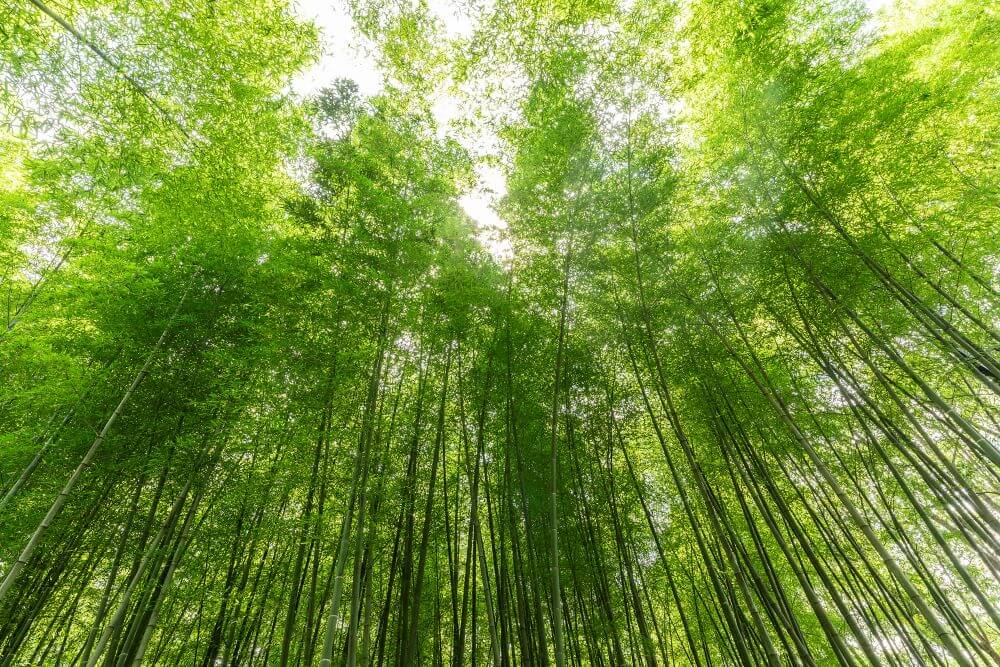
Organic bamboo can be turned into one of the most sustainable fabrics. But that doesn’t mean it’s likely to be processed in a way that involves a lot of chemicals. As a result, the material can have harmful effects. As a result, the material represents only a small portion of the market.
6. Lyocell
The Austrian manufacturer Lenzing gave the mark to Lyocell. Lenzing is the world’s most prestigious manufacturer of Lyocell and Modal. Lyocell is a semi-synthetic fabric. The material has become very popular in the sustainable fashion world.
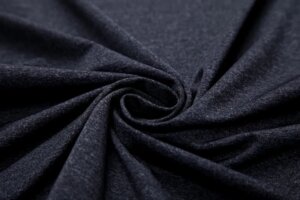
It is made from the pulp of eucalyptus trees. These trees do not require large amounts of water or pesticides. Lyocell’s manufacturing is also sustainable because it requires less water than other fabrics. Advanced technology makes solvent recovery as high as 99.7%.
7. Modal
Modal is another semi-synthetic fabric known for its comfort and breathability. Modal is made from beech trees. Although it uses unsustainable production processes, it involves far fewer wastes and chemicals.
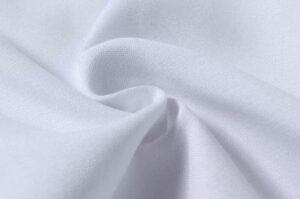
Modal fiber is a combination of natural fiber texture and synthetic fiber practicality. It has the softness of cotton, the luster of silk, and the smoothness of hemp. Its water absorption and breathable performance are better than cotton. Its fabrics are bright and full of color. Modal fibers can be blended with a variety of fibers to enhance the quality of these fabrics.
8. Bamboo lyocell
Nowadays, bamboo’s popularity is soaring. Many products include it, such as eco-friendly underwear. The process used by bamboo lyocell can reuse chemicals and water.
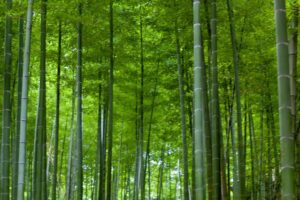
First, bamboo may be unsustainable. Secondly, it is easy to confuse bamboo Lyocell fiber with bamboo viscose. These mixtures require large amounts of chemicals to mold the pulp into silky fibers. Some brands have started to create their own sustainable bamboo fiber metrics.
9. Ecovero
Recently, a new viscose fiber-Ecovero appeared on the market. This fiber reduces emissions and water use by 50 percent compared to regular viscose fibers. They are made from a variety of sustainable wood and pulp. This material is more in line with the concept of sustainable development.
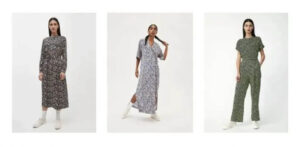
10. PINATEX
PINATEX is a vegetable leather made from pineapple leaves. It entered the sustainable fashion world as a sustainable and pollution-free leather product.

It’s made from waste pineapple leaves. This can not only reduce the waste of resources but also increase production. Most importantly, the material degrades naturally. This can protect the environment.
11. SCOBY leather
Kombucha is fermented using a living culture called SCOBY. The bacteria at the bottom of Kombucha’s bottle could be the leather of the future.
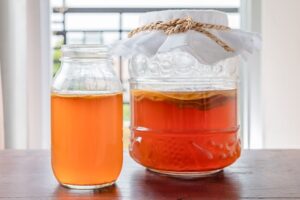
SCOBY leather is biodegradable. It does not require heavy metals or other tanning chemicals. The cost of building this leather has come down a lot.
12. S.CAFE
S.CAFE is made using ground coffee beans. We turn them into yarn. The products made by S.CAFE can dry quickly and have UV protection. Clothes made from S.CAFE have the scent of coffee, which will keep you awake for the day.
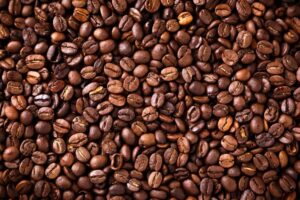
13. QMONOS
QMONOS is a fabric made in Japan. It is made of synthetic spider silk. It uses techniques such as the genetic engineering of microbes and spider silk.

This fiber is light and comfortable, but it is stronger than steel. It is completely biodegradable. Remarkably, none of the spiders were harmed during the birth process.
14. BREWED PROTEIN
Spiber, a Japanese company, has introduced a new eco-friendly fabric: BREWED PROTEIN.
Brewed Protein is a filamentous protein fiber produced by plant fermentation. It can be processed into cashmere yarns, hardened resins similar and so on.
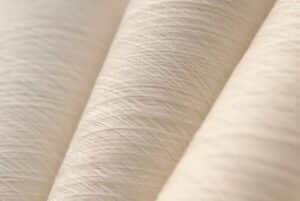
It is completely biodegradable. At the same time, it produces far fewer greenhouse gases than similar animal-derived protein fibers.
15. APPLE ECO LEATHER
APPLE ECO LEATHER is plant leather. It is made from the waste of apple juice. It is made by the Italian company Frutmat.
The material is characterized by its water resistance, breathability and durability. It’s also completely biodegradable.
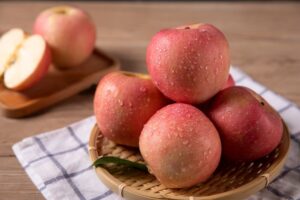
16. WOOCOA
WOOCOA is pure plant wool. Not only is it good for the animals, but it’s sustainable. Now, plant wool is becoming more and more popular. It is used in a variety of products.

17. CUPRO
CUPRO is made from recycled cotton clothing or lint. Lint is the short lint that sticks to the seeds after harvest. This material is an alternative to silk.
CUPRO is a semi-synthetic fabric that has been chemically treated. The production process is sustainable because almost all of the water is recycled.
18. QMILK
QMILK has been described as “the material of the future”. The material is made using casein, a by-product of the dairy industry. The material is natural, compostable, flame-retardant and smooth.

19. Recycled cotton
Recycled cotton is produced from post-industrial or post-consumer waste. Some cotton underwear and sustainable jeans are made from the material. This has the advantage of conserving resources.
20. Cork cloth
Cork cloth is picked from cork oak trees by scraping off the bark. Cork cloth was formerly used to make boards and bottles. But now it can be used to make our clothes. The material has become popular for vegan bags and shoes.
When a cork tree regrows its bark, it consumes more carbon dioxide than most types of trees. This is good for protecting the environment. Cork can be dried directly in the sun after being picked. Then cork can be made into cork cloth using only water. Finally, cork cloth is made into all kinds of fashionable goods.
21. ECONYL
ECONYL is a recycled nylon. It is a new nylon fabric made of discarded plastics, discarded fishing nets and discarded fabrics. Unlike nylon, the material is produced with much less water.
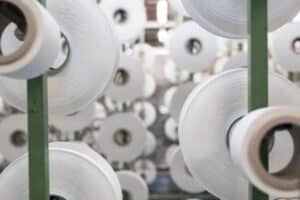
22. Recycled polyester
Recycled polyester (RPET) is made from waste plastic. This greatly reduces the harm of single-use plastics to the environment.
Recycled polyester can take on many different feels and functions. Therefore, recycled polyester has a wide range of uses. Recycled polyester, for example, can be used to make thin and stretchy sports products, as well as thick and fluffy sustainable products.
23. Other recycled fabric
Using recycled fibers can reduce the carbon footprint of textiles and bring clothing back to life, meanwhile, conserving resources. There are not only recycled polyester, but also Recycled nylon and other recycled materials on the market.
24. Sustainable new materials
Natural fabrics have been developed in the textile and fabric industry: Milk fabric is ecological and economical because it requires only 2 liters of water per kilogram of material, it utilizes waste milk, and it is biodegradable.
Eucalyptus fiber or solubilized fiber is a strong, breathable and biodegradable fabric that comes from sustainably managed PEFC or FSC tree plantations. Other innovative sustainable fibers include seaweed fibers for very soft fabrics, coconut fibers for antibacterial properties, and lotus fibers for luxury fabrics.

